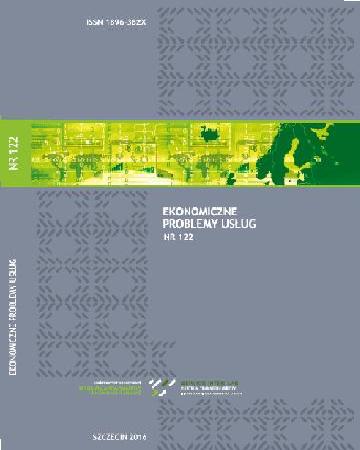
ISSN: 1896-382X
eISSN: 2353-2866
OAI
DOI: 10.18276/epu.2018.130-22



Issue archive /
nr 130 2018
Zastosowanie metody conjoint w analizie preferencji klientów biur podróży
(THE CONJOINT METHOD APPLICATION IN ANALYZING PREFERENCES OF TOUR OPERATOR CLIENTS)
| Authors: |
Elżbieta
Wąsowicz-Zaborek
Szkoła Główna Handlowa w Warszawie Kolegium Gospodarki Światowej |
| Keywords: | conjoint analysis preferences of tour operator clients package tour |
| Data publikacji całości: | 2018-03-30 |
| Page range: | 18 (229-246) |
| Klasyfikacja JEL: | C18 M31 Z33 |
Abstract
The conjoint method is often used in marketing research to classify, analyze and measure customer preferences for products. Thanks to its application, it is possible to obtain information on the most preferred combinations of product characteristics from the point of view of the buyer without asking directly about the importance of particular attributes, but rather by evaluating complete marketing offers. The aim of this article is to present the conjoint method and to discuss its potential for analyzing preferences of tour operator clients. It contains a detailed description of the research procedure that can be employed to identify preferences of travel agents’ clients for package tours. Outcomes of a pilot study are reported to illustrate a practical application of the proposed method. Translated by Elżbieta Wąsowic
Download file
Article file
Bibliography
| 1. | Chiam, M., Soutar, G., Yeo, A. (2009). Online and Off-line Travel Packages. Tourism, 40, 31–40. |
| 2. | Czyżycki, R., Hundert, M., Klóska, R. (2008). Usługi a preferencje – addytywny pomiar łączny – założenia teoretyczne. Zeszyty Naukowe Uniwersytetu Szczecińskiego. Ekonomiczne Problemy Usług, 20 (497), 255–262. |
| 3. | Hudson, S., Li, J. (2016). Conjoint Analysis of Consumer Preferences to Destination Brand Attributes. Tourism Travel and Research Association: Advancing Tourism Research Globally, Paper, 22, 1–9. |
| 4. | Kośny, M., Peternek, P. (2011). Wielkość próby a istotność wnisokowania statystycznego. Didactisc of Mathematics, 8 (12), 71–80. |
| 5. | Milman, A., Pizam, A. i in. (1995). The Role of Awareness and Familiarity with a Destination: The Central Florida Case. Journal of Travel Research, 33 (3), 21–27. |
| 6. | Nuraeni, S., Arru, A.P., Novani, S. (2015). Understanding Consumer Decision-making in Tourism Sector: Conjoint Analysis. Procedia – Social and Behavioral Sciences, 169, 312–317. |
| 7. | Orme, B. (2006). Getting Started With Conjoint Analysis. Madison, WI: Research Publishers LLC. |
| 8. | Rao, V.R. (2014). Applied Conjoint Analysis. New York: Springer. |
| 9. | Sagan, A., Rybicka, A., Brzezińska, J. (2013). Od conjoint analysis do metod wyborów opartych na menu. Zeszyty Naukowe. Uniwersytet Ekonomiczny w Krakowie, 916, 13–23. |
| 10. | Sagan, A.R. (2016). Conjoint analysis oparta na modelach IRT w zagadnieniu optymalizacji produktów bankowych. Prace Naukowe Uniwersytetu Ekonomicznego we Wrocławiu, 427, 184–194. |
| 11. | Sarstedt, M., Mooi, E. (2014). A Concise Guide to Market Research. The Process, Data, and Methods Using IBM SPSS Statistics. New York: Springer. |
| 12. | Szymańska, A. (2013). Podejście kompozycyjne i dekompozycyjne w pomiarze wyrażonych preferencji konsumentów. Prace Komisji Geografii i Przemysłu Polskiego Towarzystwa Geograficznego, 21, 239–252. |
| 13. | Szymańska, A., Dziedzic, D. (2005). Conjoint analysis jako metoda analizy preferencji konsumentów. Zeszyty Naukowe Akademii Ekonomicznej w Krakowie, 680, 1–14. |
| 14. | Tripathi, S.N., Siddiqui, M. (2010). An Empirical Study of Tourist Preferences Using Conjoint Analysis’. Journal of Business and Applied Management, 5 (2), 1–16. |
| 15. | UNWTO Tourism Higlights 2016 (2017). UNWTO. |
| 16. | Ustawa z 24.11.2017 o imprezach turystycznych i powiązanych usługach turstycznych. Dz.U. 2017, poz. 2361. |
| 17. | Walesiak, M. (2002). Problemy wyboru w procedurze conjoint analysis. W: A. Zelaś (red.), Przestrzenno-czasowe modelowanie i prognozowanie zjawisk gospodarczych (s. 227–243). Kraków: Wyd. AE w Krakowie. |
| 18. | Wang, K., Liu, H., Hu, W., Cox, L. (2016). Using Online Self-assessment Tool to Improve Conjoint Analysis Application in Choices of Wildlife Excursions. Internet Research, 26 (3), 644–660. |
| 19. | Won, D., Bang, H., Shonk, D.J. (2008). Relative Importance of Factors Involved in Choosing a Regional Ski Destination: Influence of Consumption Situation and Recreation Specialization. Journal of Sport & Tourism, 13, 249–271. |
| 20. | Ziółkowski, J. (2014). Decyzje konsumentów na rynku edukacji wyższej na przykładzie wyboru wykładowców przez studentów Szkoły Głównej Handlowej w Warszawie. Gospodarka Narodowa, 3, 153–166. |